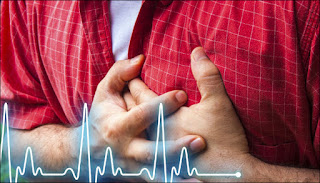Etripamil Nasal Spray for Rapid Conversion of Supraventricular Tachycardia to Sinus Rhythm
Prof.Dr.Dram,profdrram@gmail.com,Gastro Intestinal,Liver Hiv,Hepatitis and sex diseases expert 7838059592,9434143550
 The study by Stambler et al. examined the efficacy of different doses of intranasal etripamil (a rapid-onset, short-acting, phenylalkylamine class L-type calcium-channel blocker) in terminating sustained (>5 minutes) SVT induced in the electrophysiology laboratory. The drug demonstrated high efficacy for rapid termination (within 15 min) of SVT compared with placebo. The median time to conversion from SVT to sinus rhythm was <3 min. Atrioventricular nodal reentry was the mechanism of the SVT in the vast majority of study patients.
The study by Stambler et al. examined the efficacy of different doses of intranasal etripamil (a rapid-onset, short-acting, phenylalkylamine class L-type calcium-channel blocker) in terminating sustained (>5 minutes) SVT induced in the electrophysiology laboratory. The drug demonstrated high efficacy for rapid termination (within 15 min) of SVT compared with placebo. The median time to conversion from SVT to sinus rhythm was <3 min. Atrioventricular nodal reentry was the mechanism of the SVT in the vast majority of study patients.
In this phase II study, 104 patients with paroxysmal supraventricular tachycardia were given etripamil to determine its safety and efficacy. Patients who received etripamil nasal spray exhibited between 65% and 95% conversion from supraventricular tachycardia to sinus rhythm, compared with 35% in the placebo group. Median time to conversion was less than 3 minutes with etripamil. Frequently reported adverse events included local irritation or reduced blood pressure with the highest dose.
Catheter ablation is the treatment of choice in patients with paroxysmal supraventricular tachycardia (SVT) who desire to avoid or are unresponsive or intolerant to drug therapy.For patients requiring therapy who are reluctant to undergo catheter ablation, drug therapy remains a viable alternative, although with significantly lower efficacy rates.
For acute conversion of SVT, vagal maneuvers (including Valsalva and carotid sinus massage) are the first-line intervention, though their success rate remains limited (<30%). When vagal maneuvers fail, outpatients may use a single oral dose to acutely terminate an episode of SVT. This so-called “pill in the pocket” approach necessitates the use of a drug that has a short onset of action (ie, immediate-release preparations), and currently, no such drugs are available for nonparenteral self-administration. Although oral verapamil, diltiazem, beta-blockers, and flecainide have been utilized in these situations, their onset of action is relatively slow and their efficacy is modest. Therefore, in many patients with sustained SVT, acute termination of the arrhythmia often requires intravenous drug therapy in a controlled medical environment.
Although a self-administered etripamil nasal spray can potentially become an important approach for the acute management of SVT, its safety and efficacy still need to be verified in phase 3 controlled studies
- Kidney stones universally present hazard in north india,dillution by water prevent it
- Steroid and placebo effect equally for mild persisting asthma with low sputum eosinophils
- Government wants to fix public healthcare staff shortages with ayush docs: will it work?
- Plea in hc for payment of salaries of edmc, north mcd teachers and doctors
- 7 indian pharma companies named in us lawsuit over inflating generic drug prices
- Woman in up dies after explosion in her mouth during treatment,what is diagnosis?
- Woman in up dies after explosion in her mouth during treatment,what is diagnosis?
- Woman in up dies after explosion in her mouth during treatment,what is diagnosis?
- Air pollution ! mothers organising rally in london,anaesthetist choosing gas,will india follow?
- Cardiac arrest is always not sudden as understood -a study

 Comments (
Comments ( Category (
Category ( Views (
Views (